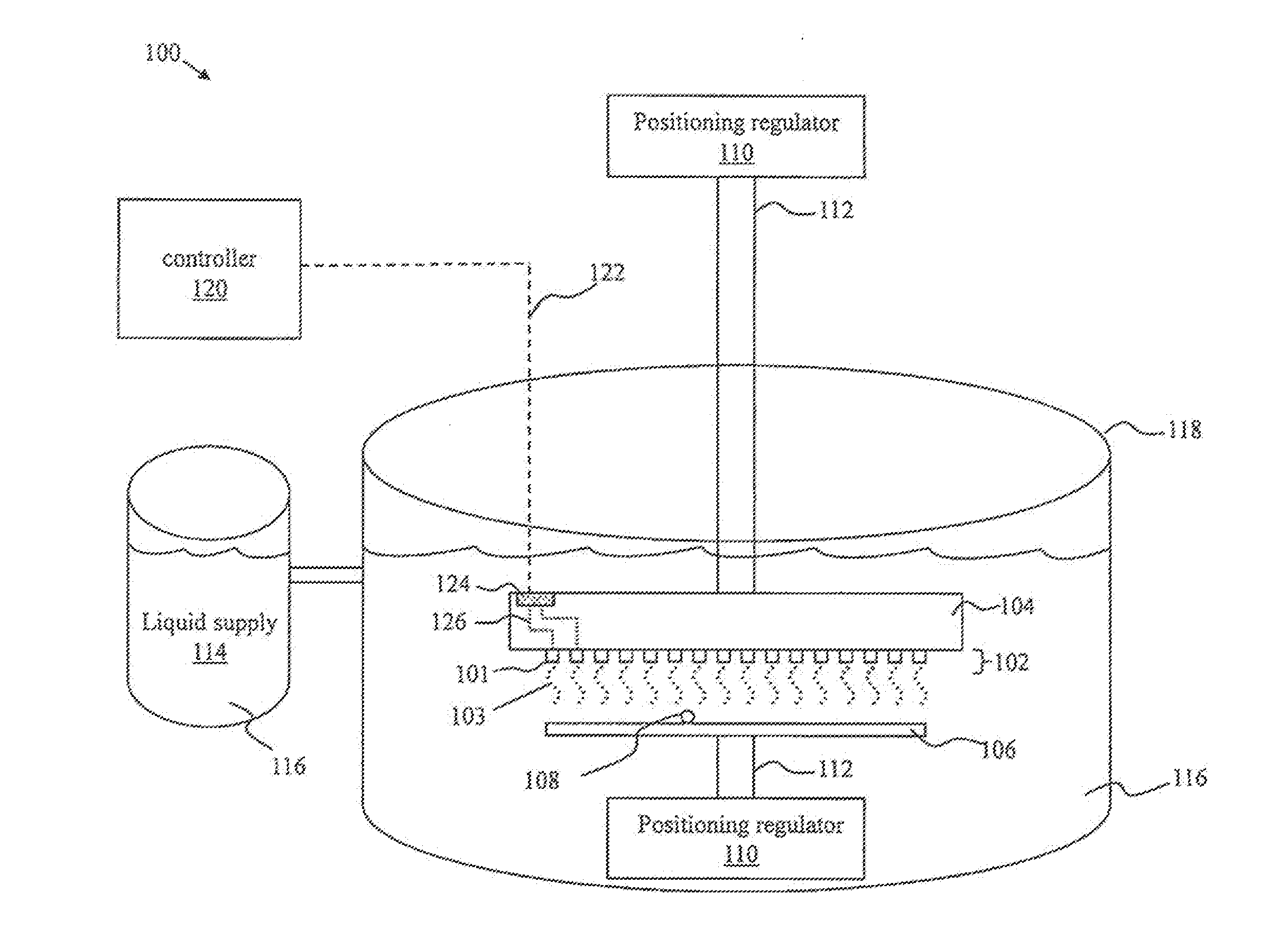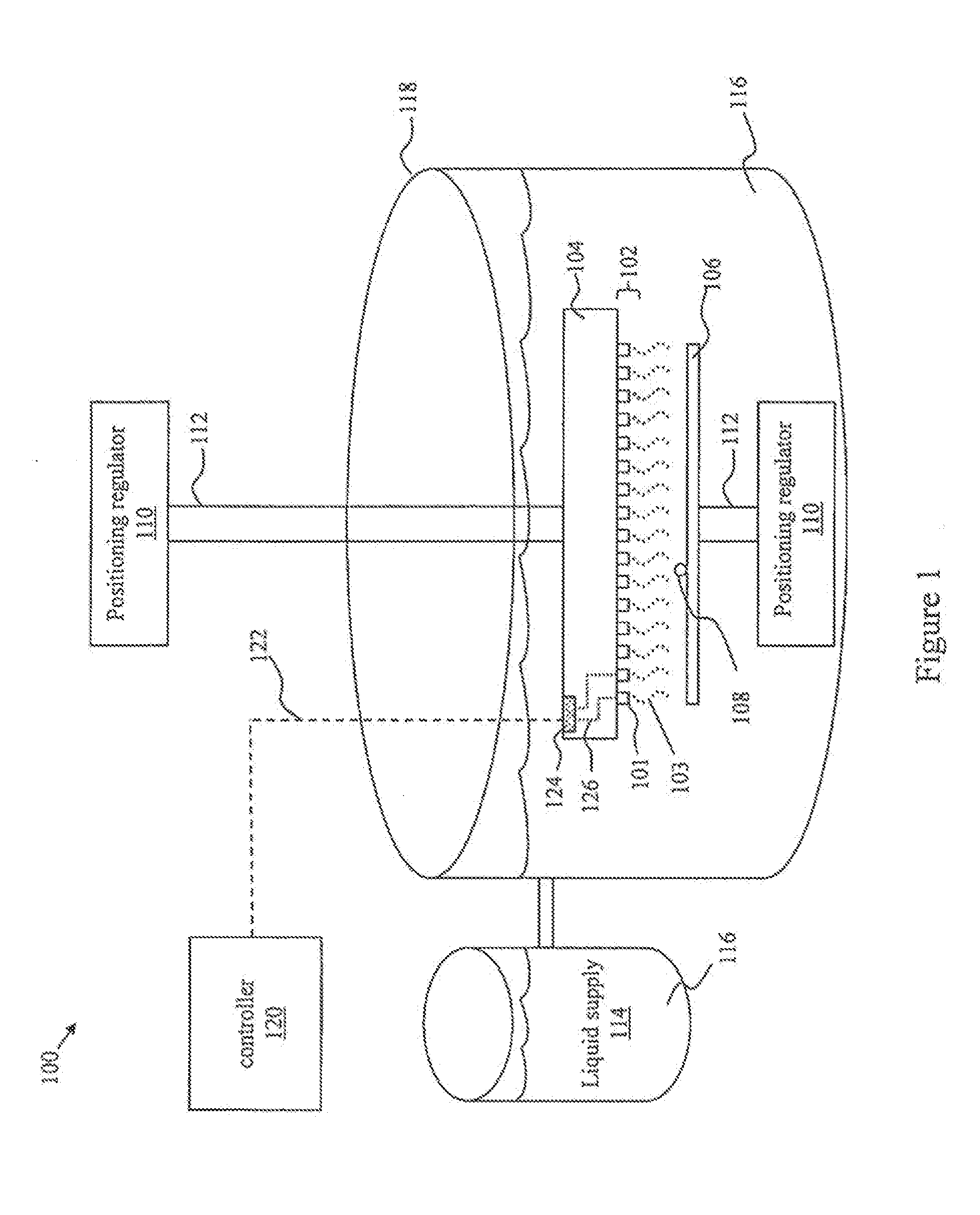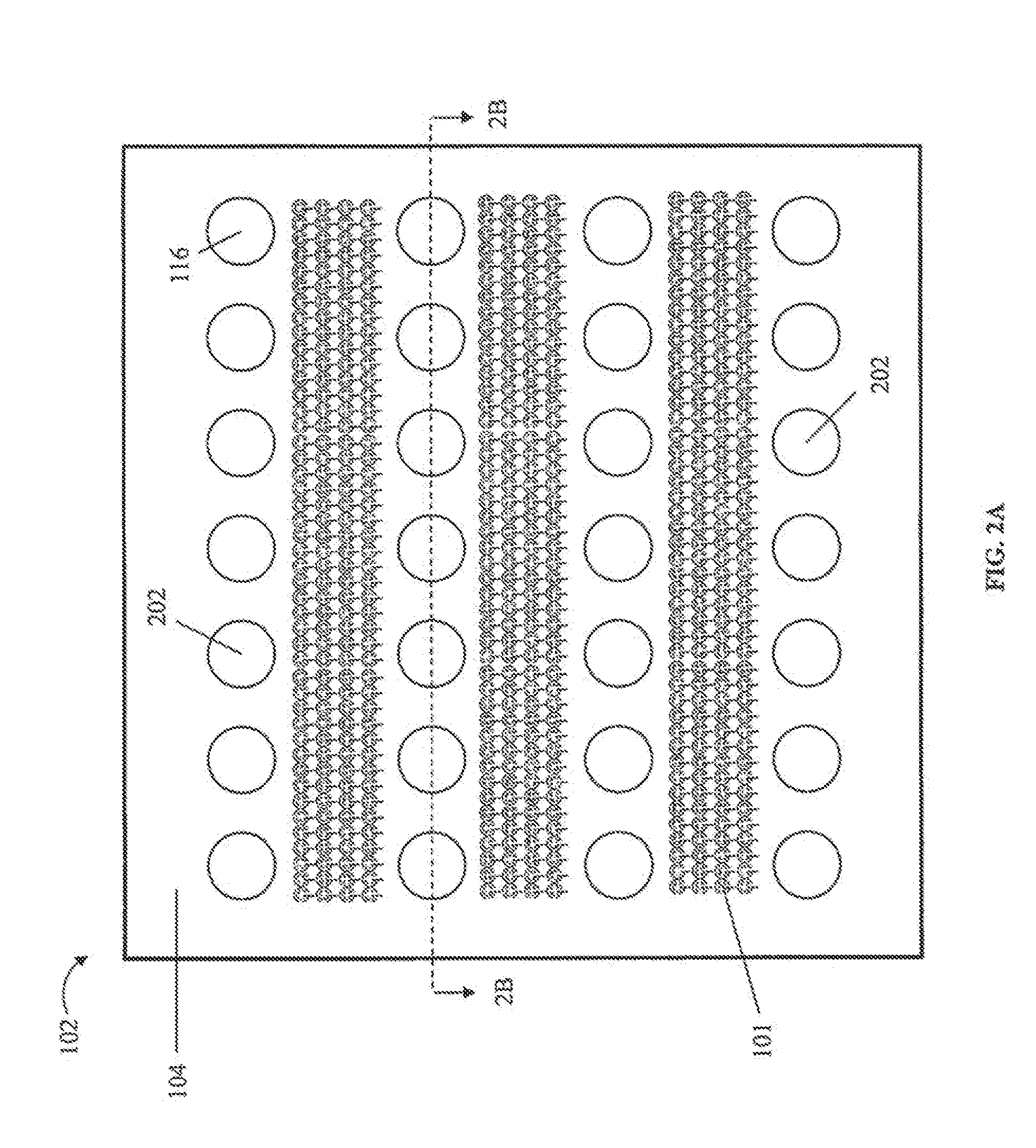Surface Cleaning Method and Apparatus Using Surface Acoustic Wave Devices
a surface acoustic wave and surface cleaning technology, applied in the field of semiconductor, can solve the problems of limited frequency range of large transducer and particle removal efficiency of megasonic cleaner, inability of megasonic cleaner to safely remove particles smaller than 50 nanometers with high resonant frequency, and inability of transducer to create directional flows, etc., to achieve the effect of safely removing particles from surfaces
- Summary
- Abstract
- Description
- Claims
- Application Information
AI Technical Summary
Benefits of technology
Problems solved by technology
Method used
Image
Examples
Embodiment Construction
[0044]Various features and advantageous details are explained more fully with reference to the nonlimiting embodiments that are illustrated in the accompanying drawings and detailed in the following description. Descriptions of well-known starting materials, processing techniques, components, and equipment are omitted so as not to unnecessarily obscure the invention in detail. It should be understood, however, that the detailed description and the specific examples, while indicating embodiments of the invention, are given by way of illustration only, and not by way of limitation. Various substitutions, modifications, additions, and / or rearrangements within the spirit and / or scope of the underlying inventive concept will become apparent to those skilled in the art from this disclosure.
[0045]FIG. 1 describes one embodiment of a system 100 for cleaning surfaces. The system 100 may include an array 102 of acoustic transducers 101 which includes individual acoustic transducers 101. Acous...
PUM
 Login to View More
Login to View More Abstract
Description
Claims
Application Information
 Login to View More
Login to View More - R&D
- Intellectual Property
- Life Sciences
- Materials
- Tech Scout
- Unparalleled Data Quality
- Higher Quality Content
- 60% Fewer Hallucinations
Browse by: Latest US Patents, China's latest patents, Technical Efficacy Thesaurus, Application Domain, Technology Topic, Popular Technical Reports.
© 2025 PatSnap. All rights reserved.Legal|Privacy policy|Modern Slavery Act Transparency Statement|Sitemap|About US| Contact US: help@patsnap.com



